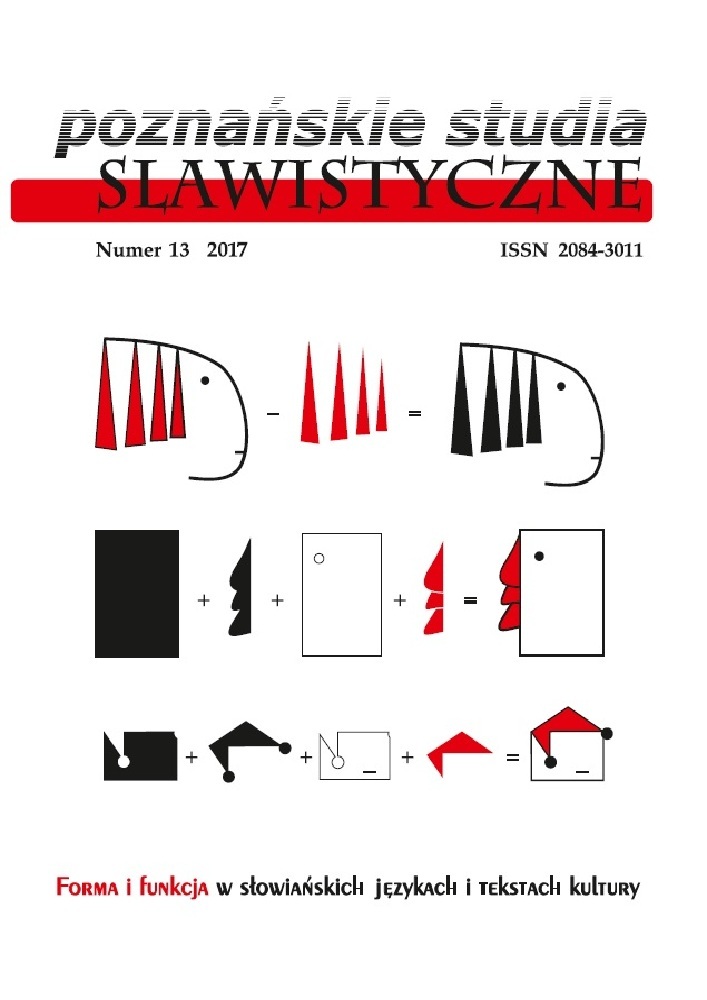Abstract
In this study, we are trying to connect the J. Tynjanov’s theory of the constructive principle of the genre with the M.M. Bahtin’s theory of genre memory, through the analysis of Gogol’s stories Old World Landowners materials A Terrible Vengeance and The Nose. This research is primarily focused on the meaning and the function of their double structure. Double structure principle reflects in levels of genre, in levels of the speech, in levels of chronotope, as well as in literary heroes motivation. Doubling reality and characters that are in the narrative world of Gogol is often transmitted using a mirror, a Double, a dream or a vision, showing, in fact, the inconvenience that every man feels when confronted not only with his „I”, but also when he attempts to explain himself through Others, see himself in someone else’s soul. A symbolic expression of this internal state occurs in a similar manner, using similar concepts and ideas, double structures which it is advisable to bind together the idea and its realization.References
Annenskij, I. (1979). Knigi otraženij. Moskva: Nauka.
Bahtin, M.M. (1963). Problemy poètiki Dostoevskogo. Moskva: Hudožestvennaâ literatura.
Bahtin, M.M. (1975). Voprosy literatury i èstetiki. Moskva: Hudožestvennaâ literatura.
Bahtin, M.M. (2002). Sobranie sočinenij v 8 tomah, t. 6. Moskva: Âzyki slavânskih kul’tur.
Belyj, A. (1934). Masterstvo Gogolâ. Moskva–Leningrad: Gosudarstvennoe izdatel’stvo hudožestvennoj literatury.
Bočarov, S.G. (2012). Genetičeskaâ pamât’ literatury. Moskva: Rossijskij gosudarstvennyj gumanitarnyj universitet.
Ermakov, I.D. (1999), Psihoanaliz literatury. Puškin. Gogol’. Dostoevskij. Moskva: Novoe literaturnoe obozrenie.
Gippius, V.V. (1966). Tvorčeskij put’ Gogolâ. U: Ot Puškina do Bloka. Moskva–Leningrad: Nauka.
Gogol’, N.V. (1976–1979). Sobranie sočinenij v 7 tomah. Moskva: Hudožestvennaâ literatura.
Günther, H. (1968). Das Groteske bei N.V. Gogol´. Formen und Funktionen. München: Sagner.
https://doi.org/10.3726/b12376
Holquist, M. (1990). Dialogism: Bakhtin and his World. London-New York: Routledge.
https://doi.org/10.4324/9780203330340
Jovanović, M. (1995). Pripovetke Nikolaja Gogola ili posramlivanje đavola. Beograd: Srpska književna zadruga.
Lotman, Û.M. (1988). V škole poètičeskogo slova. Puškin. Lermontov, Gogol’. Moskva: Prosveŝenie.
Mann, Û.V. (1996). Poètika Gogolâ. Variacii k teme. Moskva: Coda.
Merežkovskij, D. (1906). Gogol i čert. Moskva: Skorpion.
Nabokov V., (1944). Gogol. New York: New Directions.
Remizov, A.M. (1954). Ogon’ veŝej. Sny i predson’e. Pariž: Oplešnik.
Smirnov, I.P. (1994). Psihodiahronologika. Psihoistoriâ russkoj literatury ot romantizma do naših dnej. Moskva: Novoe literaturnoe obozrenie.
Tynânov, Û.N. (1977). Poètika. Istoriâ literatury. Kino. Moskva: Nauka.
Vajskopf, M. (2002). Sûžet Gogolâ. Morfologiâ. Ideologiâ. Kontekst. Moskva: Rossijskij gosudarstvennyj gumanitarnyj universitet.
Vajskopf, M. (2003). Ptica-trojka i kolesnica duši. Moskva: Novoe literaturnoe obozrenie.
Vinogradov, V.V. (1963). Stilistika. Teoriâ poètičeskoj reči. Moskva: АN SSSR.
Virolajnen, M. (2003), Reč’ i molčanie: Sûžety i mify russkoj slovesnosti. Sankt Peterburg: Amfora.
License

This work is licensed under a Creative Commons Attribution-NoDerivatives 4.0 International License.
